Speeding through Time: We Drive 50 Years of Porsche Turbos
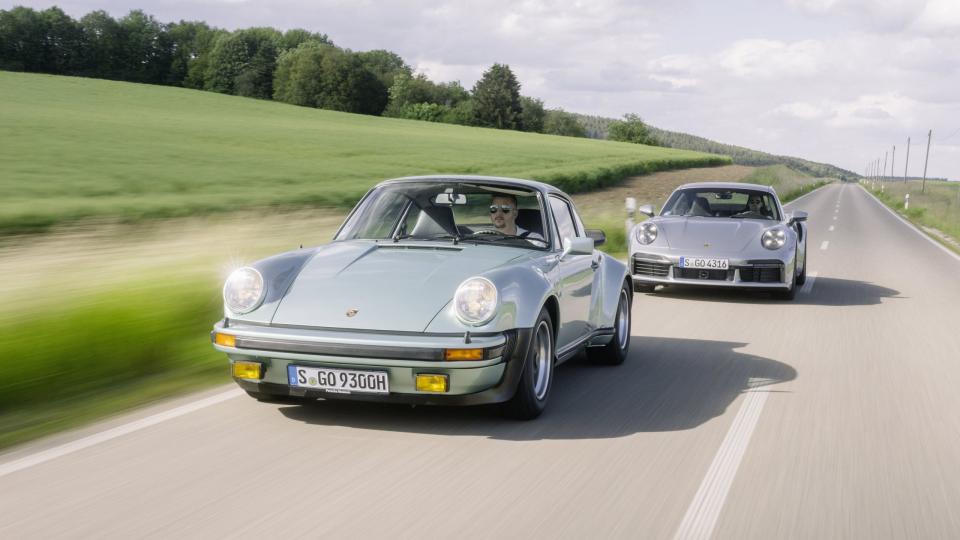
Porsche has affixed its Turbo nameplate to a host of models since it first appeared in the mid-1970s. Come with us as we time-travel through Porsche's homeland in a sextet of Turbos spanning the nameplate's entire history.
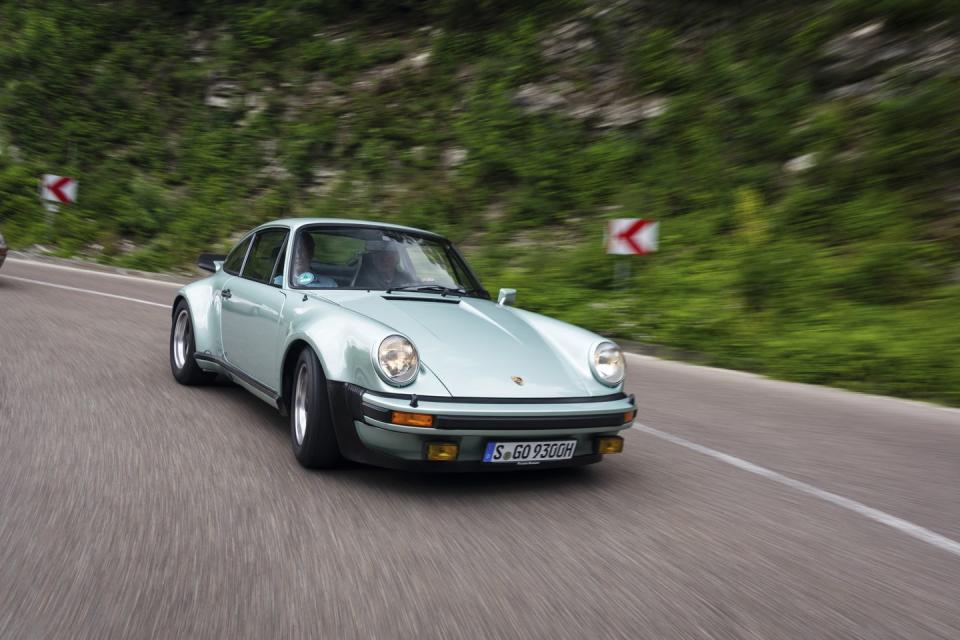
1975 911 Turbo: The Widow-Maker
How petite it is! Especially inside, where a whiff of Eau de Patina is wafting through the no-frills cabin clad in partly scuffed black leather. Everything feels, looks, and actually is old and old-fashioned. No air conditioning, but the noisiest, least effective ventilation ever. Five huge round analog gauges, three closely spaced bottom-hinged pedals, a few scattered knobs and buttons, a squeaking period Blaupunkt radio, and two doors that shut with a reassuringly mechanical click reminiscent of the Mercedes G-wagen. A long spindly shift lever grows out of the flat floor like a black rubber-mounted metal walking stick. Only four forward ratios (the eagerly awaited five-speed gearbox was a later addition) mean very long legs: First stretches to 50-plus mph, second peaks at 89 mph, third is good for 130 mph, and fourth expires at 155 mph with about 1000 more rpm to play with.
The air-cooled engine starts with a double cough and a burp, idle speed is first wavy then lumpy, and the throttle operates with the time delay that was typical of early turbocharged engines. With the transmission in gear, the accelerator lag increases from one to several seconds, depending where exactly the 3.0-liter flat-six is on the rev ladder when the driver hits it with the "Go!" command. Soon swimming in sweat, we relearn over the next hour to step on the gas even earlier and earlier still, to never lift when the g-force carousel is in full swing, and to rev the hell out of that whining, low-inertia backpack in first, second, and third. Shifting down between 4000 and 5000 rpm soon becomes second nature, although interrupting the flow can be bad news in the wet, which is the stuff heart attacks are made of.
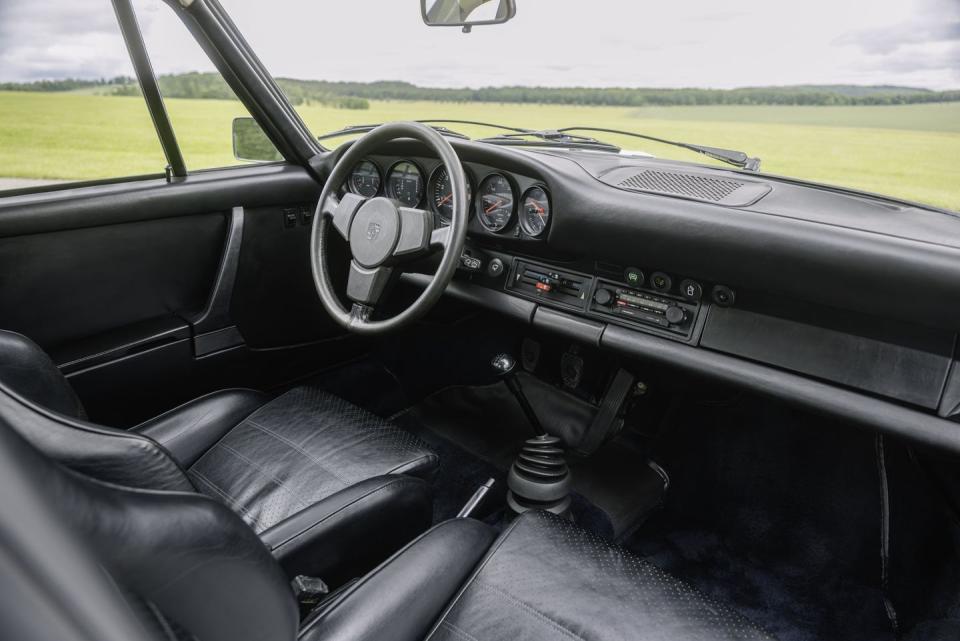
Driving this car fast is hard work. Driving it at the limit requires a superhuman sixth sense, because while the arms wrestle the unassisted steering and the feet tap-dance on the differently weighted pedals, the brain must simultaneously process the turbo's dynamic idiosyncrasies in exact relation to the road, the speed, and the weather. Twenty minutes in, the hot brakes are beginning to smell, but the tire grip has at last found a manageable front-to-rear balance, and thankfully there are no Sport+ or ESC Off persuasions to deal with. The trademark soundtrack, which properly explodes above 4000 rpm when max torque weighs in, consolidates confidence and courage in a very vocal manner, corner by corner, shift by shift. Although the off-kilter weight distribution of approximately 40/60 percent front to rear is a constant concern, and the torsion-bar suspension feels downright archaic, once you get the hang of it, the very first 911 Turbo is every bit as exciting as a modern supercar—promise!
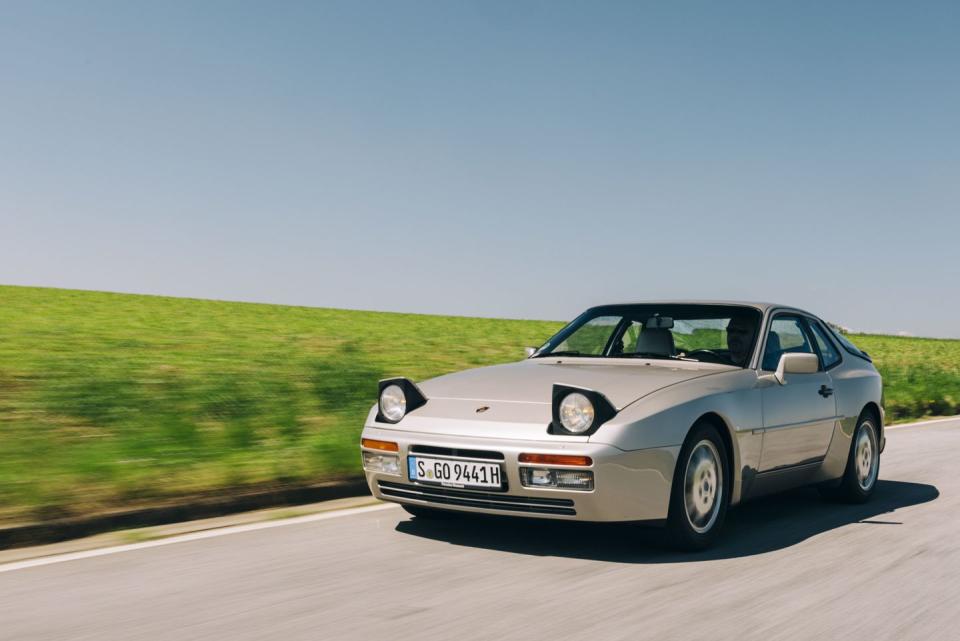
1989 944 Turbo: Crisis? What Crisis?
It's fair to say that without the 944, Porsche may not have survived. Launched for 1982, the front-engine coupe adopted its transaxle layout from the 924, which was first meant to be a Volkswagen (but VW already had the Scirocco) and then an Audi (but Audi had no money) before becoming the little-loved stepsibling of the G-series 911, which remained in production for 16 years due to a lack of funds for a redesign. The 944 followed hot on the heels of the underrated 924 Turbo, but it was a few years before the artificially aspirated four-cylinder found its way into the 944. While the base version was good for 217 horsepower, later models and the limited-edition Turbo S featured a beefed-up 247-hp evolution of the 2.5-liter engine. Together with its bigger brother, the V-8-powered 928 introduced in 1977, the entry-level sports car finally earned the cash Porsche needed to reinvent the 911.
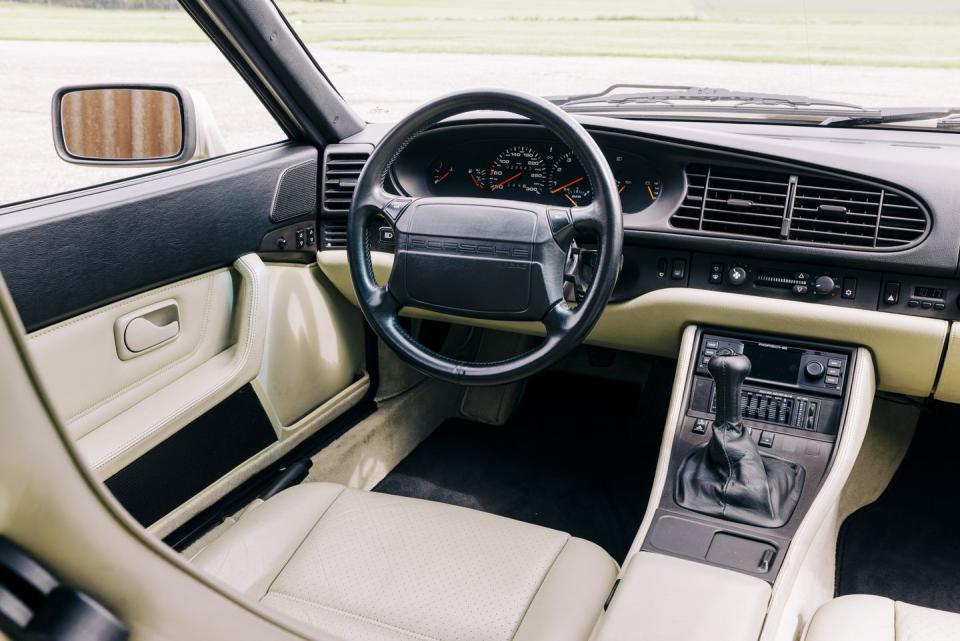
Although 15 years had passed since the debut of Porsche's first turbo, throttle lag is still very much an issue in this 944. And while the 944 sports five gears, its four-pot engine too must be revved to deliver—mixing low rpm and a tall ratio puts you invariably at the back of the pack. Despite a nearly 600-pound weight penalty over the 930 Turbo, the front-engine coupe loses only four-tenths getting from zero to 60 mph and at 162 mph is even a little faster overall. More important still, it feels very much like a modern sports car: balanced and benign, composed and comfortable, easy to drive and live with. We prefer the 944 Turbo S with Koni dampers, a limited-slip differential, and bigger brakes (from the 928 S4), but even the standard model is a commendably contemporary piece, except for the low-mounted nonadjustable steering wheel, the silly hand-brake position next to the doorsill, and the hopeless headlights. While the 944 Turbo is almost eerily up-to-date in terms of vehicle dynamics, we are grateful for the absence of current nuisances like wall-to-wall digital displays, invasive touchscreens, and infuriating warning chimes.
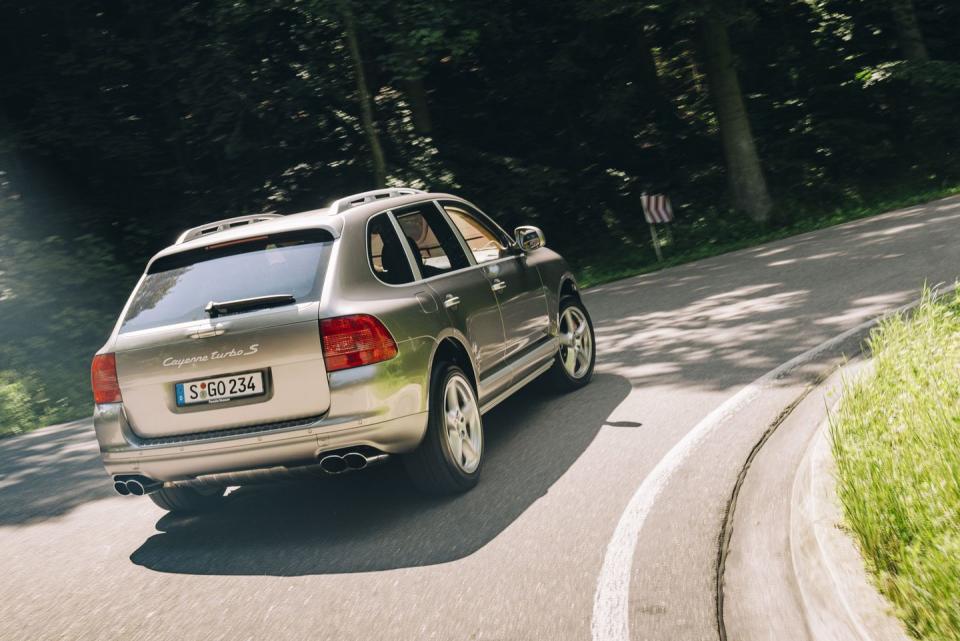
2006 Cayenne Turbo S: The Game Changer
Porsche's turnaround was masterminded by Wendelin Wiedeking, who became CEO in 1993. Under his leadership, the company kicked off the immensely profitable 986 (Boxster/Cayman) and 996 (fifth-gen 911) twins launched in 1996 and ’97, as well as the brand's first SUV, the Cayenne, which went on sale in 2002 as a sibling of the Volkswagen Touareg and the Audi Q7. Developed by chief technical officer Wolfgang Dürheimer and his team, the Cayenne was one of the few vehicles of its kind to combine luxury and sportiness in a manner that boosted sales as well as the brand image. When the high-output 520-hp Turbo S was presented in late 2005, it ranked as the brand's second-most-powerful model, eclipsed only by the Carrera GT with the 603-hp V-10. The twin-turbo 4.5-liter V-8 propels the 5668-pound SUV to 60 mph in a brisk 4.9 seconds and on to a top speed of 168 mph. That's the good news. The bad news concerns the observed fuel consumption, which on an empty autobahn rarely bettered 10 mpg.
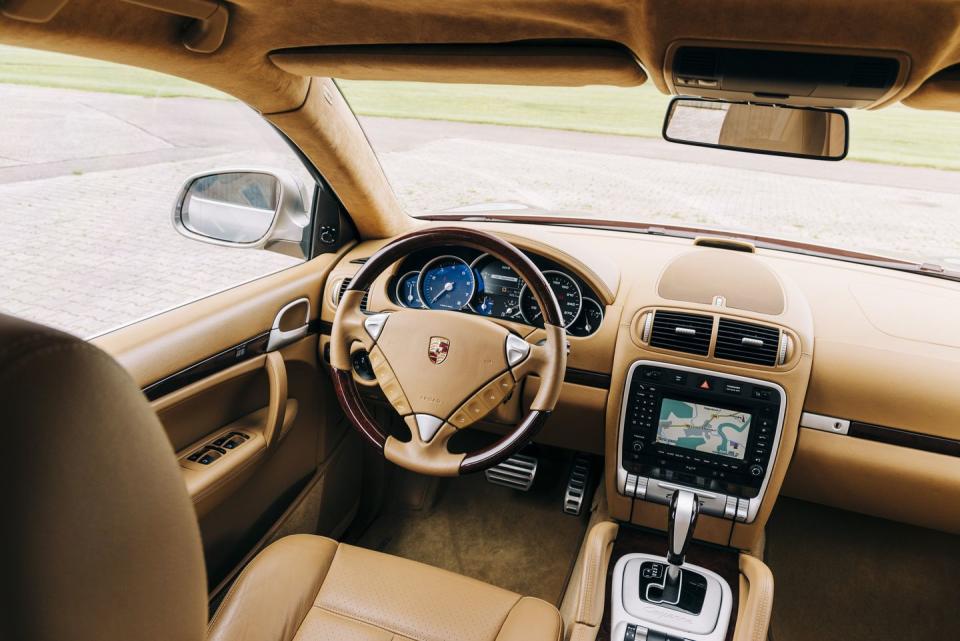
By the end of its life cycle, the first-gen Cayenne had become the bestselling Porsche and the company's prime profit maker. Its success paved the way for the smaller Macan, which is currently the runner-up on the global in-house sales charts. Released 31 years after the initial 911 Turbo, the top-of-the-line Cayenne still throws turbo-lag tantrums—not 930-like hairy, but still annoyingly pronounced. In addition, the steering feels shockingly heavy compared with later vintages, and the big brakes struggle to match modern systems for strength and stamina. The air-spring suspension manages to be both brittle and woolly, as the Cayenne rolls quite a bit through bends on back roads, and the high-speed stability is highly variable depending on the pavement surface. The cabin is an oddball mix of fake chrome, very real plastic, and acres of leather. Ergonomically, this SUV heralds the overkill layouts of the digital revolution that's still in full swing.
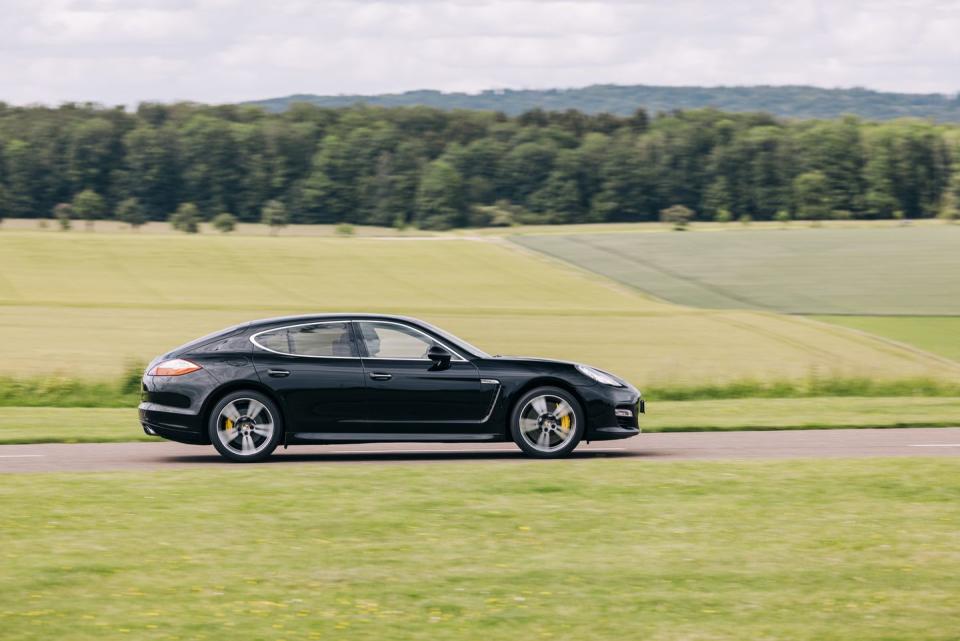
2010 Panamera Turbo: The Plan C Car
Back solidly in the black, Porsche decided to expand its product portfolio once again. The possible contenders were a small lightweight sports car dubbed Mimo, a belated two-door 928 replacement, and a high-end five-door GT. The last proposal was the CEO's clear favorite, and it was Herr Wiedeking who personally influenced the design of the car's polarizing rear end by defining key points of the package. The overloaded dashboard looked like a jewel PlayStation for the very rich: myriad push buttons, enough instruments to busy three or four eyes, a wealth of extra-cost creature comforts, and an elaborate top-quality execution. The Panamera shared its engine lineup with the Cayenne and the Audi A8. Two years after the 500-hp Turbo, Porsche added an even brawnier 550-hp S version, which accelerated from 0 to 60 mph in a remarkable 3.3 seconds and topped 191 mph.
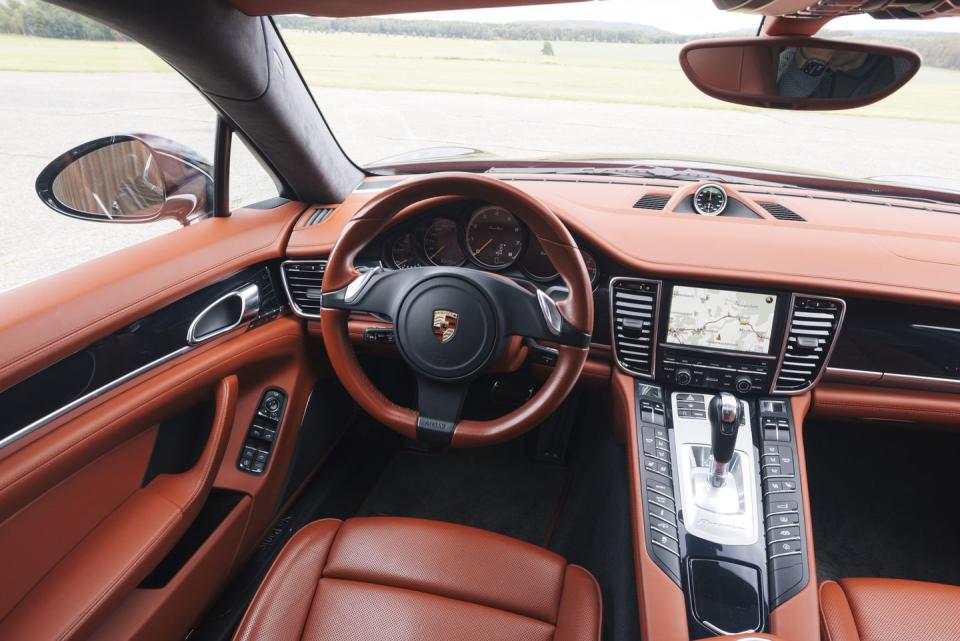
A sporty alternative to the luxury-car establishment, the Panamera exceeded its sales target from the start. The specimen pictured here is a one-off tailor-made special for the German singer Udo Lindenberg, a former brand ambassador, who liked his cars stealthy on the outside and superplush inside. Sunglasses would certainly help to digest the bright Carrera red interior, and one still needs a tactile right foot to massage the throttle in a way that keeps the turbos on the alert at all times. Although improved, this application is still not as responsive as the latest electrically supported turbochargers, but lag is now down to one second or even a fraction thereof, and in combination with the seven-speed dual-clutch transmission and the variable torque-split all-wheel-drive system, both performance and handling can only be described as spot on.
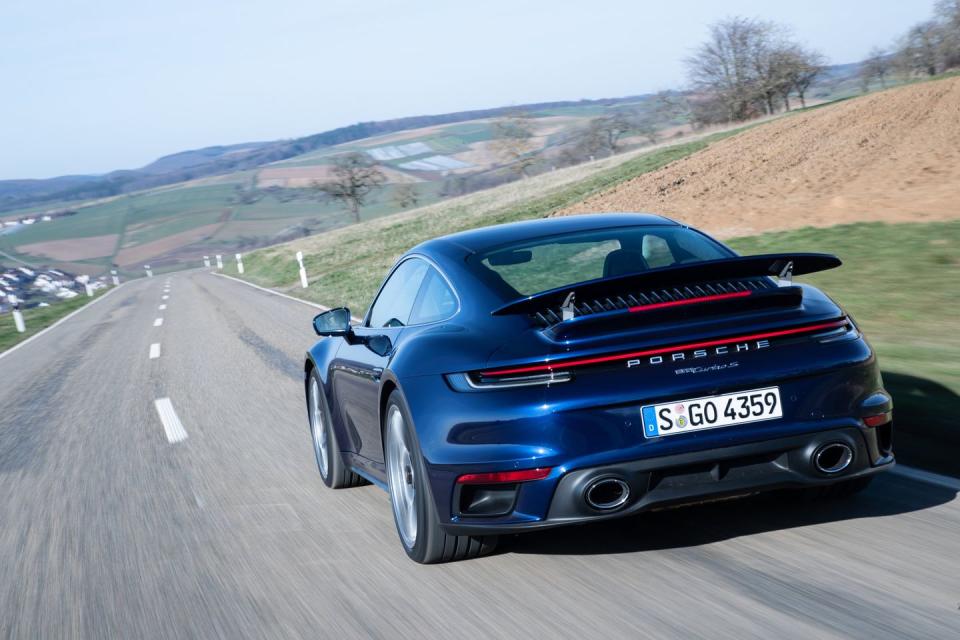
2023 992 Turbo: Pure Perfection
No, this is not the rowdy 640-hp Turbo S but the tamer 572-hp base model. That's base as in $184,350 (now $198,850 in 2024) before options, which no longer include a manual transmission. You are, however, still welcome to spend close to $25K on better lights, better brakes, a sport suspension and exhaust, a front-axle lift, and active anti-roll bars. The S is 0.2 second quicker off the mark and 6 mph faster overall, and it also kicks up peak torque from 553 to 590 lb-ft, although in real-world driving, only die-hard Porschephiles would notice the difference. Now that all 911 engines are turbocharged, one might expect the Turbo to be kind of an über-911, but perhaps that title now belongs to the GT3 instead.
Unlike others in the range, the 911 Turbo comes with all-wheel drive as standard, which sets the tone in terms of vehicle characteristics and driver appeal. In a way, the wide-body coupe with the lateral air intakes and the prominent rear wing is more GT than its hardcore GT-branded stablemates. The 911 Turbo certainly embodies the best of all worlds: ample low-end urge, plenty of top-end grunt, and a nicely progressive torque flow in between. Throttle lag? You need to provoke it, such as by abruptly switching from coasting to full attack in fifth or sixth gear with the drive mode stuck in sleepy Normal. In Sport and Sport+, accelerator and engine are like a mind meld, snapping into fast forward with solenoid rapidity.
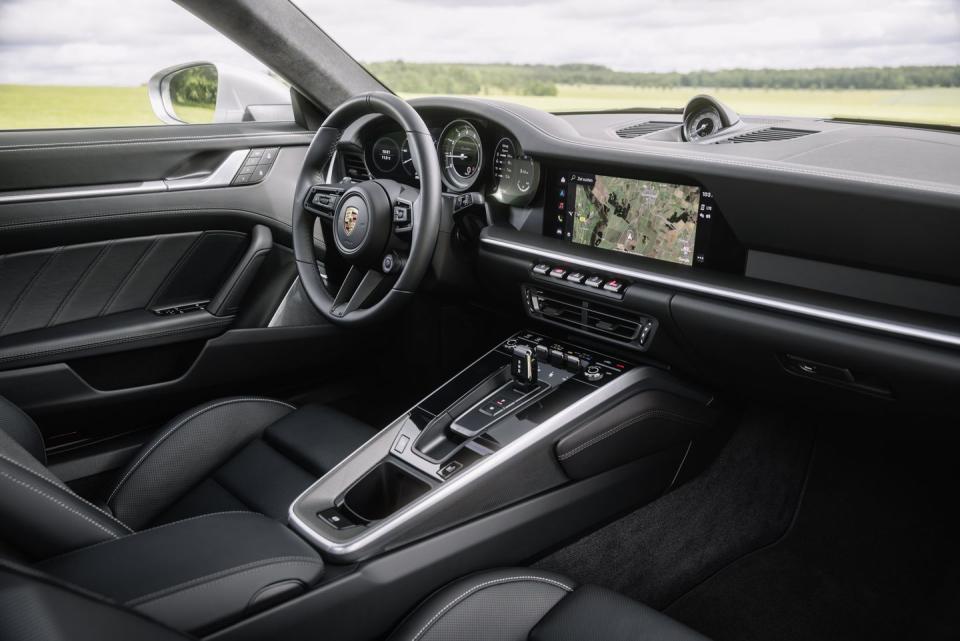
In the 992, the two sequential variable-geometry chargers are fully integrated elements of a sensationally seamless engine-and-transmission assembly. Rather than selecting a gear, depressing the loud pedal, and waiting for the kick in the butt that would follow three or four seconds later, you can rely on the modern 3.7-liter and the eight-speed PDK to expertly manage the flow, which can be merely energetic or positively explosive. The dreaded delay between input and effect has at last given way to an equally fascinating but much better controlled fully integrated fusion of fast-forward forces.
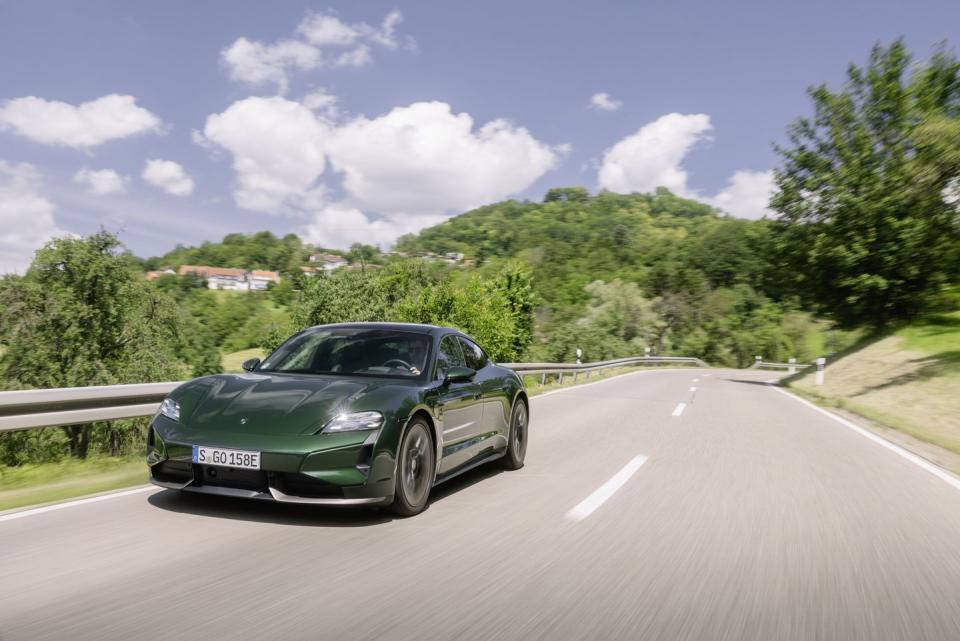
2025 Taycan Turbo: Alternative Avenue, Anyone?
Depending on how you look at it, an EV is a Turbo without turbo lag. Because when maximum torque is instantly available, the issue is no longer how to best generate it but how to modulate it in the most efficient or exciting manner. The Taycan Turbo is, in other words, the first Porsche Turbo with no turbo inside. Instead, it uses innovative and very different means to generate the turbo effect, which is to produce ample power and torque now. The new Taycan Turbo whips up 670 horsepower and 626 lb-ft in Overboost mode with launch control active. Not good enough? Then feel free to check out the 938-hp Turbo S or the still wilder 1019-hp Turbo GT with the Weissach package. But at $175,595, even the base Taycan Turbo is not exactly a bargain, and as long as EV resale values continue to plummet, leasing would be the only sensible option. But that's a different story.
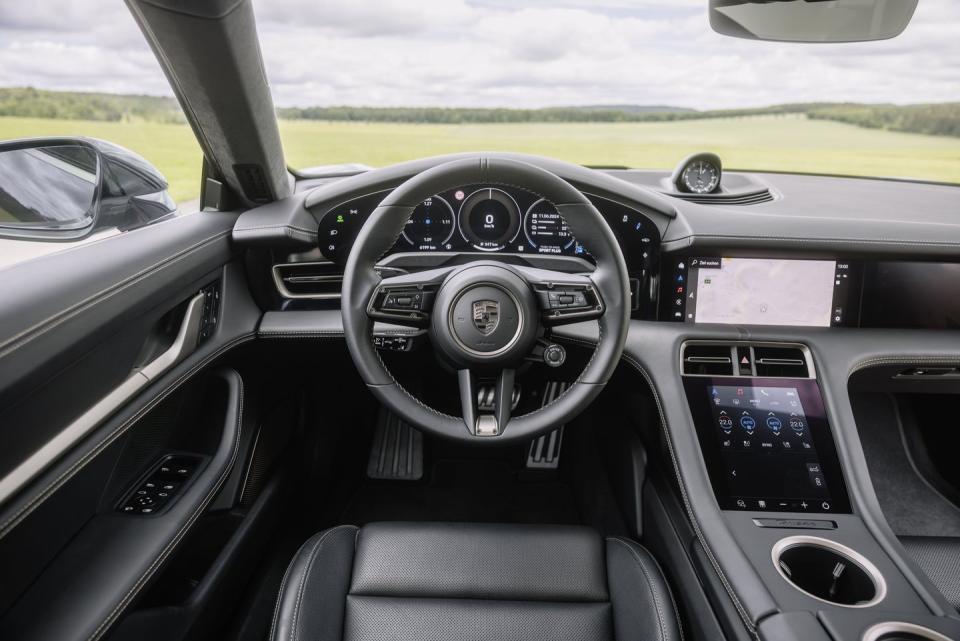
Parameters are different from what governed the Turbos of the past. The new Turbo uses an 800-volt architecture with a stronger 97.0-kWh battery that can charge at up to 320 kW. But flooring the accelerator has a similar effect in terms of both acceleration (zero to 60 mph in 2.5 seconds) and efficiency. A hard-charging 930 rarely bettered 14 mpg, yet a full tank was good for at least 250 miles. Driven enthusiastically at a steady 125 mph, the latest Taycan Turbo needs to pit every 80 minutes. If zero emissions is your ambition, the latest Taycan hits the bull's-eye. But for a total-immersion experience full of spine-tingling emotions, any turbocharged Turbo is the better bet.
You Might Also Like

 Yahoo Finance
Yahoo Finance 